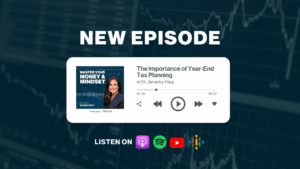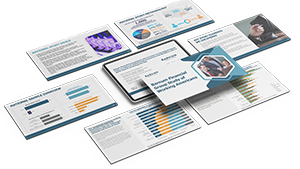
Your retirement lifestyle will depend not only on your assets and investment choices, but also on how quickly you draw down your retirement portfolio. The annual percentage that you take out of your portfolio, whether from returns or the principal itself, is known as your withdrawal rate. Figuring out an appropriate initial withdrawal rate is a key issue in retirement planning and presents many challenges.
Why is your withdrawal rate important?
Take out too much too soon, and you might run out of money in your later years. Take out too little, and you might not enjoy your retirement years as much as you could. Your withdrawal rate is especially important in the early years of your retirement; how your portfolio is structured then and how much you take out can have a significant impact on how long your savings will last.
Gains in life expectancy have been dramatic. According to the National Center for Health Statistics, people today can expect to live more than 30 years longer than they did a century ago. Individuals who reached age 65 in 1950 could anticipate living an average of 14 years more, to age 79; now a 65-year-old might expect to live for roughly an additional 19 years. Assuming rising inflation, your projected annual income in retirement will need to factor in those cost-of-living increases. That means you’ll need to think carefully about how to structure your portfolio to provide an appropriate withdrawal rate, especially in the early years of retirement.
| Current Life Expectancy Estimates | ||
| Men | Women | |
| At birth | 74.8 | 80.2 |
| At age 65 | 82.5 | 85.2 |
Source: National Center for Health Statistics, November 2023
Conventional wisdom
So, what withdrawal rate should you expect from your retirement savings? The answer: It depends. The seminal study on withdrawal rates for tax-deferred retirement accounts (William P. Bengen, “Determining Withdrawal Rates Using Historical Data,” Journal of Financial Planning, October 1994) looked at the annual performance of hypothetical portfolios that are continually rebalanced to achieve a 50-50 mix of large-cap (S&P 500 Index) common stocks and intermediate-term Treasury notes. The study took into account the potential impact of major financial events such as the early Depression years, the stock decline of 1937-1941, and the 1973-1974 recession. It found that a withdrawal rate of slightly more than 4% would have provided inflation-adjusted income for at least 30 years.
Other Strategies
Other later studies have shown that broader portfolio diversification, rebalancing strategies, variable inflation rate assumptions, and being willing to accept greater uncertainty about your annual income and how long your retirement nest egg will be able to provide an income also can have a significant impact on initial withdrawal rates. For example, if you’re unwilling to accept a 25% chance that your chosen strategy will be successful, your sustainable initial withdrawal rate may need to be lower than you’d prefer to increase your odds of getting the results you desire. Conversely, a higher withdrawal rate might mean greater uncertainty about whether you risk running out of money. However, don’t forget that studies of withdrawal rates are based on historical data about the performance of various types of investments in the past. Given market performance in recent years, many experts are suggesting being more conservative in estimating future returns.
Past results don’t guarantee future performance. All investing involves risk, including the potential loss of principal, and there can be no guarantee that any investing strategy will be successful. Rebalancing involves selling some investments in order to buy others. Investors should keep in mind that selling investments in a taxable account could result in a tax liability. Asset allocation and diversification do not guarantee a profit or protect against investment loss.
Inflation is a major consideration
To better understand why suggested initial withdrawal rates aren’t higher, it’s essential to think about how inflation can affect your retirement income. Here’s a hypothetical illustration; to keep it simple, it does not account for the impact of any taxes. If a $1 million portfolio is invested in an account that yields 5%, it provides $50,000 of annual income. But if annual inflation pushes prices up by 3%, more income — $51,500 — would be needed next year to preserve purchasing power. Since the account provides only $50,000 income, an additional $1,500 must be withdrawn from the principal to meet expenses. That principal reduction, in turn, reduces the portfolio’s ability to produce income the following year. In a straight linear model, principal reductions accelerate, ultimately resulting in a zero portfolio balance after 25 to 27 years, depending on the timing of the withdrawals.
Volatility and portfolio longevity
When setting an initial withdrawal rate, it’s important to take a portfolio’s ups and downs into account, and the need for a relatively predictable income stream in retirement isn’t the only reason. According to several studies done in the late 1990s and updated in 2011 by Philip L. Cooley, Carl M. Hubbard, and Daniel T. Walz, the more dramatic a portfolio’s fluctuations, the greater the odds that the portfolio might not last as long as needed. If it becomes necessary during market downturns to sell some securities in order to continue to meet a fixed withdrawal rate, selling at an inopportune time could affect a portfolio’s ability to generate future income.
Making your portfolio either more aggressive or more conservative will affect its lifespan. A more aggressive portfolio may produce higher returns, but might also be subject to a higher degree of loss. A more conservative portfolio might produce steadier returns at a lower rate, but could lose purchasing power to inflation.
Calculating an appropriate withdrawal rate
Your withdrawal rate needs to take into account many factors, including (but not limited to) your asset allocation, projected inflation rate, expected rate of return, annual income targets, investment horizon, and comfort with uncertainty. The higher your withdrawal rate, the more you’ll have to consider whether it is sustainable over the long term.
Ultimately, however, there is no standard rule of thumb; every individual has unique retirement goals, means, and circumstances that come into play.
More ways to help stretch your savings
- Don’t overspend early in your retirement
- Plan IRA distributions so you can preserve tax-deferred growth as long as possible
- Postpone taking Social Security benefits to increase payments
- Adjust your asset allocation
- Adjust your annual budget during years when returns are low
Tax considerations
Prolonging your savings may require attention to tax issues. For example, how will higher withdrawal rates affect your tax bracket? And does your withdrawal rate take into account whether you will owe taxes on that money?
Also, if you must sell investments to maintain a uniform withdrawal rate, consider the order in which you sell them. Potentially reducing the long-term tax consequences of withdrawals or the sale of securities could also help your portfolio last longer.
IMPORTANT DISCLOSURES
This material was prepared by Broadridge Investor Communication Solutions, Inc. This information is believed to be from reliable sources; however, no representation is made as to its accuracy or completeness. This information does not constitute tax or legal advice and may not be relied on for the purpose of avoiding any Federal tax penalty, nor is it a solicitation or recommendation to purchase or sell any insurance or investment product or service, and readers should not rely upon it as such. Readers should seek such advice from their own tax or legal counsel or financial professional. Securities, investment advisory and financial planning services through qualified registered representatives of MML Investors Services, LLC. Member SIPC. 6 Corporate Drive, Shelton, CT 06484. Tel: 203-513-6000.



